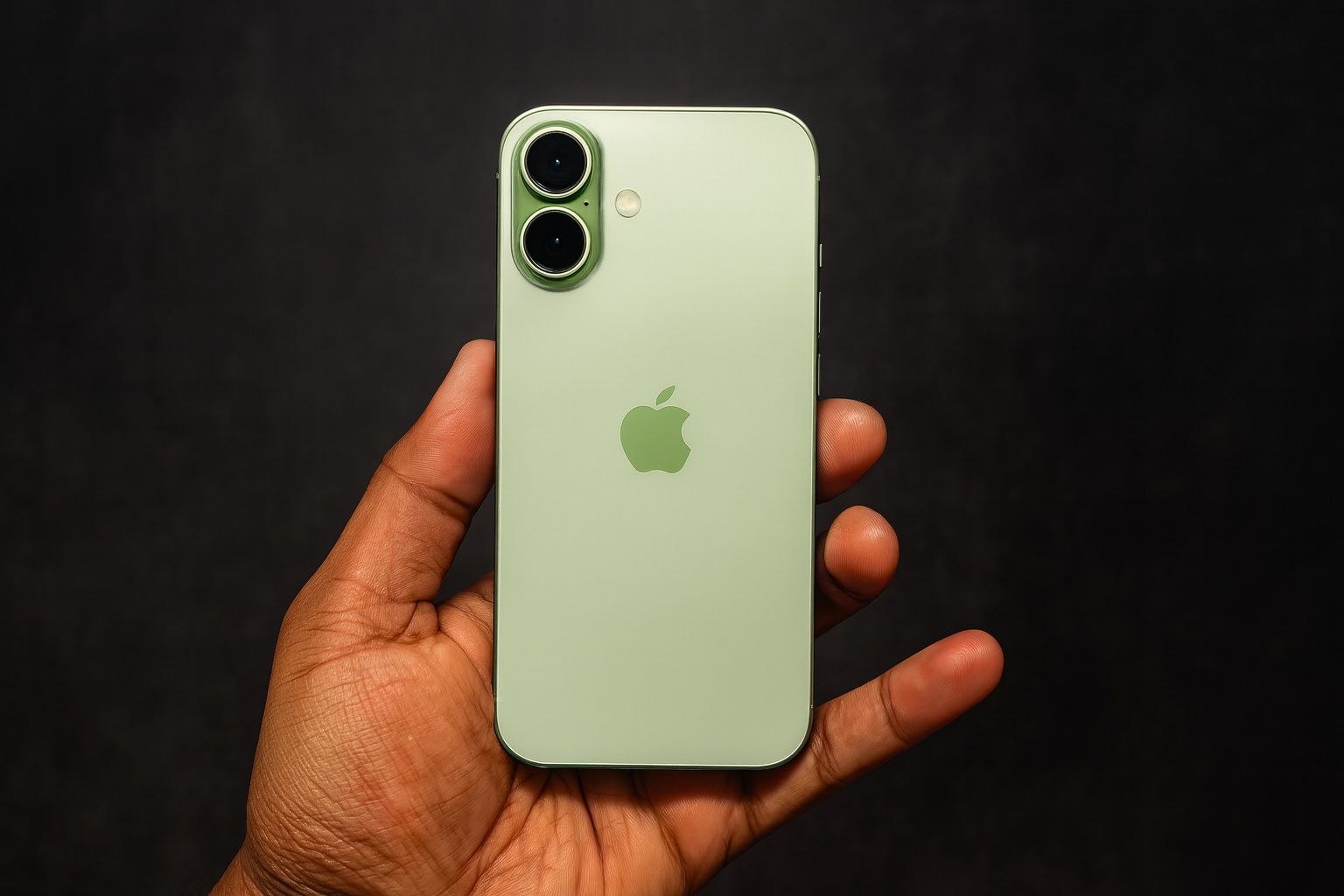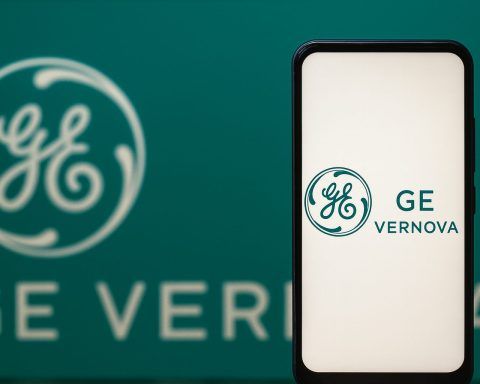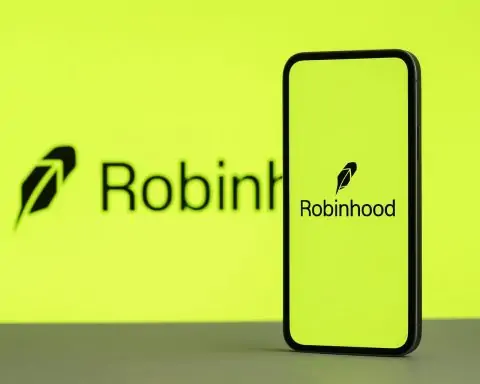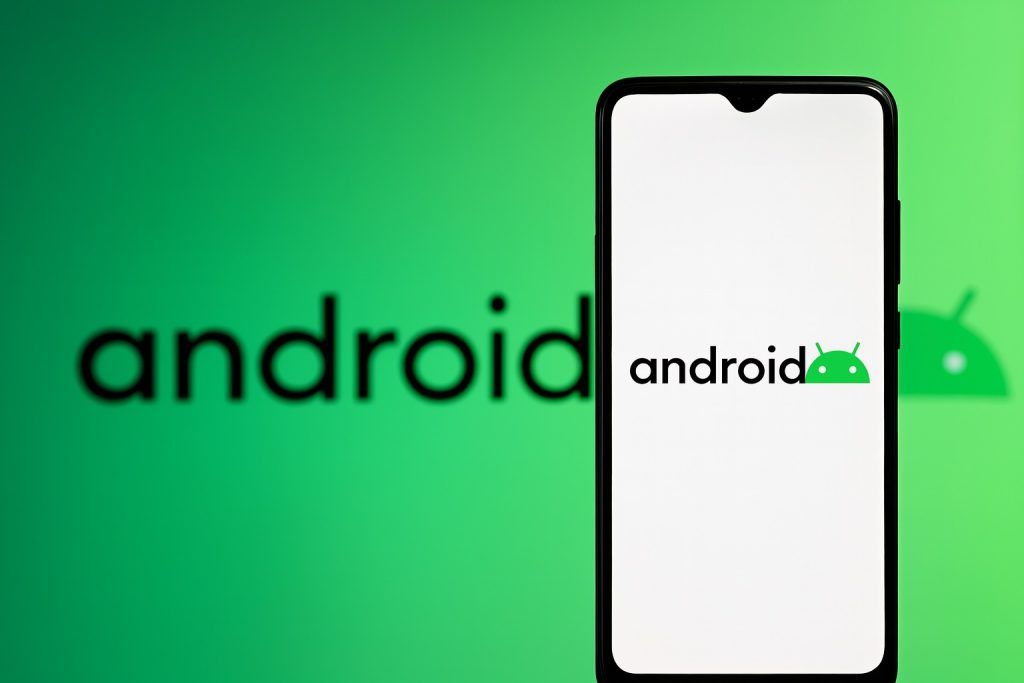- Buttonless iPhone 20 Rumor: Apple’s 20th-anniversary iPhone (expected in 2027 and often dubbed iPhone 20) is rumored to drop all physical side buttons in favor of pressure-sensitive solid-state controls with haptic feedback [1] [2]. This would affect the power and volume keys as well as the Action and Camera Control buttons, making them seamless, non-moving parts on the device’s frame [3]. Some reports even speculate Apple might skip an “iPhone 19” name to align this major redesign with the anniversary number [4].
- iPhone 18’s Transitional Design: Before the buttonless leap, 2026’s iPhone 18 is expected to simplify its new Camera Control button, which was introduced in recent models as a quick camera/AI shortcut [5]. Leaked plans say Apple will remove the capacitive touch layer from this button and rely solely on a pressure sensor, reducing complexity and cost while retaining similar functionality [6] [7]. (The current dual-sensor design is reportedly expensive and causing costly repairs, so this change would cut costs [8].) The Camera Control will still launch the camera and register presses or squeezes, just with fewer components.
- Solid-State Tech “Finally Ready”: After years of development (Apple first tried to implement solid-state buttons in 2023’s iPhone 15 Pro before shelving the idea [9]), insiders say the technology has now passed functional testing [10]. Apple has “completed functional verification” of its next-gen haptic button system and is prepping it for mass production in time for the 2027 iPhone launch [11]. The goal is to make these touch-based buttons feel as “real” as clicky mechanical buttons via localized haptic feedback, so users barely notice the difference [12] [13]. (In fact, solid-state buttons detect pressure instead of moving, and they mimic a click by vibrating – similar to how newer MacBook trackpads or the iPhone 7’s home button worked [14].)
- Design Ambitions – A Seamless “Glass Slab”: Going button-free is part of Apple’s broader design vision. By eliminating physical buttons (which require cutouts in the frame), Apple can achieve a truly uninterrupted chassis and possibly even wraparound “waterfall” displays [15]. Apple even described the ultra-thin iPhone Air as “another step towards [a] ‘singular piece of glass’” in terms of design [16] – hinting that the ultimate iPhone would look like a single seamless glass slab with no protrusions. Rumors suggest the 2027 model could indeed have an all-glass front that curves at all edges and no visible bezels or cutouts [17]. In that context, mechanical buttons are seen as design liabilities, and replacing them with invisible touch zones would “elegantly” solve that [18].
- Apple’s Ecosystem & “Project Bongo”: Not just the iPhone stands to change – reports indicate Apple has been working on solid-state controls for its entire device lineup (an initiative code-named “Project Bongo”), including future iPads and Apple Watch models [19] [20]. This suggests a cohesive strategy: perfect the technology for iPhone, then roll it out across other products for a consistent, water-resistant, and durable design language. The persistence on this project underscores Apple’s confidence that once the kinks (like accidental touch sensitivity) are ironed out, haptic buttons could become standard across its ecosystem [21] [22].
- Investor Confidence & Market Reaction: Apple’s bold hardware moves come as the company is riding high on market confidence. This week, Apple stock hit an all-time high around $269 per share, briefly propelling Apple’s market capitalization to about $4 trillion [23]. Strong iPhone 17 sales (up 14% over the previous model in initial launch weeks) have helped drive the stock’s surge [24] [25]. Wedbush Securities analyst Dan Ives called Apple’s current trajectory a “watershed moment for Cupertino,” reaffirming it as “the best consumer franchise in the world.” [26] Such optimism suggests investors embrace Apple’s innovation cycle, betting that radical upgrades like a buttonless iPhone 20 could spur a super cycle of consumer upgrades. The onus will be on Apple to execute these changes flawlessly – ensuring the new haptic buttons feel natural and reliable – to uphold its premium user experience [27].
iPhone 20: A Buttonless Future for Apple’s 20th Anniversary?
Apple appears poised to fundamentally change how we interact with the iPhone by the time its 20th anniversary rolls around in 2027. According to a reliable Chinese leaker (known as “Instant Digital” or “Setsuna Digital” on Weibo), the special “iPhone 20” edition will eliminate every physical button on the device [28] [29]. Instead of clickable mechanical keys for power, volume, and other functions, the phone’s aluminum frame itself would serve as the input surface – with pressure-sensitive areas and haptic feedback mimicking the feel of clicks. In other words, no moving parts: you’d press on a solid piece of the iPhone’s side, and built-in sensors plus vibration motors would register the command and “fake” a click feeling under your finger [30] [31].
This leak suggests Apple has finalized the engineering for these solid-state buttons and even completed “functional verification” testing internally [32]. The company is reportedly confident enough to target mass production in 2027 – aligning perfectly with the launch of the 20th-anniversary iPhone. Fittingly, insiders say this model will bring “the biggest design shake-up since 2017’s iPhone X.” [33] That was the year Apple dropped the home button and introduced the bezel-free OLED screen and Face ID. The iPhone 20 could represent an equally significant leap: no buttons at all, and perhaps other radical design elements (more on that shortly).
Notably, one rumor floated that Apple might even skip the “iPhone 19” moniker in 2026 and jump straight to calling the 2027 flagship iPhone 20, specifically to emphasize the 20th year milestone [34]. Apple hasn’t confirmed any such naming plan (and it did release an iPhone 13 despite superstition), but the speculation underscores how consequential the 2027 device is expected to be. It’s not just another annual upgrade – it’s being treated as a celebratory anniversary edition with correspondingly big changes.
Why Go Buttonless? Design and Durability
The push to remove all physical buttons isn’t just for shock value; it serves Apple’s long-term design and engineering goals. For one, eliminating moving parts can increase durability and water resistance. Solid-state buttons don’t have gaps or mechanical switches that can wear out or let in water/dust over time. As AppleInsider notes, by “leaving out mechanical parts that move, Apple eliminates components that are more likely to break from wear” [35]. Fewer breakable parts could mean iPhones that last longer and have fewer points of failure (no more worrying about a jammed volume or power button after years of use).
But the even bigger motivation is aesthetic and functional design freedom. If you don’t need cutouts for buttons, you can create a truly unbroken chassis and even extend the display or glass over areas that used to host physical controls. In fact, Apple is rumored to be working on an “all-screen” iPhone with a display that curves around all four edges [36], effectively zero-bezel and no visible frame interruptions. Traditional buttons protruding out the side would be a non-starter for that design. Solid-state haptic zones solve this: they can sit flush with the frame and even be integrated under the edge of a curved display. Apple is essentially trying to realize a decades-long dream of an iPhone that looks like a single sheet of glass – a dream the company has openly hinted at. (In fact, Apple itself touted the ultra-thin iPhone Air this year as “another step towards [a] ‘singular piece of glass’” in future iPhone design [37].)
There’s also a user-centric rationale. Apple has introduced more hardware controls (like the new Action and Camera buttons) in recent years for convenience, but at the same time it has a vision of a minimalist device. Solid-state implementations could let Apple have its cake and eat it: keep useful controls but without the drawbacks of physical keys. For example, solid-state buttons can potentially be contextual or programmable (since they’re essentially software-defined zones). Imagine side controls that could change function based on what app or mode you’re in, all while maintaining a sleek look. Apple hasn’t confirmed any such functionality, but the possibilities open up when buttons become virtual – they could even light up or reposition under the glass in future iterations.
Of course, execution will be key. Apple tried to debut solid-state side buttons in 2023 on the iPhone 15 Pro, but reportedly canceled the plan late in development due to unresolved technical issues [38]. Those issues likely involved sensitivity (early leaks suggested problems with the buttons registering presses properly, or too many accidental touches when held). The latest intel says Apple has since solved these problems – hence the successful internal testing – by fine-tuning its pressure sensors and software algorithms [39]. The company also appears to be experimenting with localized haptic feedback using piezoelectric actuators to ensure each “button” press feels distinct even if nothing physically moves [40]. In simple terms, they want to make sure pressing on a non-button still feels as satisfying and reliable as a real button. “It will only be worthwhile if Apple can make the solid state buttons feel like the mechanical versions,” one report cautions [41]. Apple is keenly aware of this – the current design reportedly tries to “feel like real buttons, not like pressing on a ridged piece of metal,” as the leaker put it [42].
Another challenge is avoiding “false” inputs – i.e., the phone mistaking a casual touch or firm grip for a button press. Apple’s solution likely involves clever hardware tuning and AI algorithms. Interestingly, the rumor mill says Apple has addressed this through its functional verification phase, tackling issues like ghost touches and responsiveness [43]. The fact that they’re willing to green-light production for 2027 suggests confidence that these haptics can be made foolproof for everyday users (even when using a case, or with gloves on, etc.).
It’s worth noting Apple won’t be entirely alone if it launches a buttonless phone. Some Android manufacturers have toyed with similar concepts. In fact, Oppo and Vivo have flagship models that use pressure-based solid-state side buttons (with haptics) instead of traditional keys, demonstrating that the idea can work in practice [44]. Apple tends to perfect and popularize such innovations – much as it did with things like fingerprint sensors or face unlock – so a button-free iPhone 20 could set a new design trend for the industry. Tech observers say if Apple pulls this off smoothly, it “hints at designs where screen and controls blend into a single, uninterrupted surface,” potentially making smartphones feel more like “one continuous piece of tech in your hand” [45]. In other words, the form factor of phones could enter a new era defined by seamlessness, with Apple leading the charge.
Camera Control Button: Changes Coming Before the Big Leap
Apple’s march toward a buttonless future will involve intermediate steps, and the first will likely appear in next year’s iPhone 18. One area getting a revamp is the dedicated Camera Control button. For those unfamiliar, Apple added this extra button on the side of the iPhone 16 Pro/17 series as a quick way to launch the Camera app or trigger certain photography functions – it works in tandem with the new Action Button (which replaced the old mute switch) [46]. The Camera Control can detect different presses or even touch gestures (on current models, it has both a capacitive sensor for swipes/taps and a pressure sensor for deep presses, all beneath a sapphire crystal cover [47] [48]). It’s an innovative idea, but apparently it’s also a pricey bit of engineering.
Leaked plans indicate that the iPhone 18 will simplify this Camera Control button’s design significantly [49]. Apple is said to be removing the capacitive touch layer and keeping it purely pressure-based. In practice, that means the button would respond only when you physically press in, not just a light tap or slide on the surface. Functionally, users might not notice a big difference – you’d still press it to launch the camera or do a quick snap – but it could slightly alter how certain gestures (like swiping on the button for zoom or mode changes) work. The key point is the hardware will be simpler: just one sensor type instead of two.
Why the change? Cost and reliability. Insiders say this move is “not about reducing functionality…but about saving money.” [50] The current dual-sensor button is “very expensive for Apple and is generating costly after-sales repairs,” a report revealed [51]. By dropping the touch sensor layer, Apple cuts down on complexity (one less component that can fail or misbehave). It also likely helps battery life a tiny bit (capacitive sensors draw power). So the iPhone 18’s camera button will be cheaper to produce and maintain, all while still doing its job – a pragmatic tweak.
There were even rumors Apple might eliminate the Camera Control button entirely on the iPhone 18 to streamline the design, but the leaker Instant Digital has disputed that, clarifying that Apple is keeping the button, only making it less complex internally [52]. In fact, Apple seems committed to the concept of a camera shortcut button for now, since it ties into their push for making photography and AI features more instantly accessible.
Interestingly, some leaks suggest Apple could introduce new materials like piezoelectric ceramics in the iPhone 18’s camera button to provide better haptic feedback and prevent accidental presses [53]. Piezoelectric components can precisely localize vibration, so if Apple includes that, pressing the camera button might give a sharper “click” feel without requiring the capacitive layer. (It’s a bit technical, but essentially piezo elements could act like tiny vibration motors dedicated to that button.) This hasn’t been confirmed by Apple, of course, but it aligns with the general direction: use advanced haptics to make simpler buttons still feel premium.
The bottom line is that iPhone 18 in 2026 will likely retain the Camera Control feature but implement it in a more frugal, robust way – paving the road for the full solid-state approach by iPhone 20. It’s a smart transitional step: Apple can gather data on how well a purely pressure-based button performs in the wild (and how users like it) before committing to removing all buttons later. Think of it as Apple testing the waters of buttonless tech with one specific button first.
Bold Move or Risky Gamble? – Reactions and Outlook
Apple’s plan to nix physical buttons is undeniably bold. It harks back to the company’s willingness to ditch familiar features in the name of progress, whether it was dropping the headphone jack in 2016, the home button in 2017, or the SIM tray (in U.S. iPhones) in 2022. Each of those moves initially met with skepticism or outcry, yet Apple’s sales kept booming and competitors often followed suit. Will a buttonless iPhone face similar pushback? Quite possibly at first – many users still like the tactile reassurance of a real button, and some accessibility advocates prefer physical controls. However, if Apple’s haptic simulation is good enough, most users could quickly adapt. The iPhone 7’s solid-state home button, for example, successfully fooled a lot of people into thinking it clicked when it actually didn’t move at all.
Industry experts generally see this as the direction smartphones are heading. “Button-free, port-free phones have been Apple’s dream for years,” notes tech analyst José Adorno, pointing out that ongoing rumors of solid-state buttons are part of “the company’s old dream of a button-less and port-less iPhone.” [54] In fact, the ultimate expression of this would be an iPhone with no buttons and no charging port – entirely wireless and touch-based. Apple already took a step by removing the charger port on the Apple Watch Ultra 2, and a port-less iPhone has been rumored for future Pro models. So the iPhone 20’s button removal is a logical next step in Apple’s grand plan to minimize physical I/O on its devices.
Financially, Apple’s timing could make a lot of sense. By 2027, many users who bought the iPhone 15/16/17 series will be coming off their typical 2-3 year upgrade cycles, and a flashy new design can entice them to upgrade. The 10th-anniversary iPhone X triggered a massive upgrade “supercycle” thanks to its fresh design and features, and Apple will surely be hoping the 20th-anniversary model does the same [55]. Early leaks of a wraparound display and zero buttons certainly sound like the kind of headline-grabbing innovation that could drive a new sales peak. As long as the economy and smartphone market cooperate, 2027 could be a banner year for iPhone sales with many customers drawn to the radically redesigned device.
From a market perspective, investors appear optimistic about Apple’s innovation pipeline. The company’s stock recently soared to record highs on the back of stronger-than-expected iPhone 17 demand [56] [57]. Hitting roughly $3.99 trillion in market value this week, Apple is by far the world’s most valuable tech company [58]. Analysts at Wedbush see this as validation that Apple’s strategy – incremental improvements punctuated by big breakthrough releases – is working brilliantly. “A watershed moment for Cupertino and Big Tech,” is how Wedbush’s Dan Ives described Apple’s current position, calling Apple “the best consumer franchise in the world.” [59] In plain terms, Apple has built up so much brand loyalty and ecosystem strength that consumers and investors alike trust it will keep delivering, whether through evolutionary updates or revolutionary ones.
That said, Apple will still need to communicate the benefits of a buttonless design effectively to consumers. Expect Apple’s marketing to highlight things like improved durability, better water resistance, sleeker design, and perhaps new capabilities (maybe customizable virtual buttons?). If there are any trade-offs – for example, if cases need to be redesigned, or if force-restarting an iPhone changes because there’s no physical button combo – Apple will aim to make them minor. The company’s past transitions (like removing Touch ID or headphone jacks) show that it typically provides some alternative solution or period of adjustment to ease the change.
We should also watch how this trend might spread industry-wide. If Apple goes buttonless and users love it, other phone makers could accelerate their own similar designs. Conversely, if Apple stumbles (say the haptics aren’t quite right initially), competitors might hang back. It’s a high-stakes move in that sense: Apple is setting the tone for the next era of smartphone hardware. But given the reports of thorough testing and Apple’s patient refinement of this tech, many in the tech community are excited rather than worried. Some are already dubbing the 2027 model the “iPhone XX” and envisioning it as the device that blurs the line between gadget and glass.
The Road Ahead
Between now and 2027, we’ll see this saga unfold gradually. The upcoming iPhone 18 in 2026 should give the first real-world hints of Apple’s new approach (with that simplified Camera button). If it performs well and users don’t mind the tweak, it’s a green light toward the full solid-state implementation. We’ll also likely hear more leaks about the iPhone 20’s design – will it truly have no ports either? will Face ID sensors be hidden under the display to allow the no-bezel “glass slab” look? All of that is part of Apple’s closely guarded roadmap for the 20th anniversary edition.
For now, it’s remarkable to think how far the iPhone’s design has evolved in two decades – from a single button on the front (and chunky physical side buttons) on the original 2007 iPhone, to possibly zero buttons by 2027. If the leaks pan out, the iPhone 20 could represent the culmination of Apple’s minimalist design philosophy. No home button, no volume rocker, no power switch – nothing but touch-responsive smooth surfaces. It’s a risky bet in some ways, but if any company can make such a leap feel “magical,” it’s Apple. As ever, the company will need to balance futuristic innovation with everyday practicality.
One thing’s for sure: the hype for Apple’s 2027 iPhone is already brewing. Expect the rumor mill to keep churning, and Apple to remain characteristically silent until it’s ready to unveil the real thing. Should it succeed, the iPhone 20 might be remembered as the device that finally “killed the button” and ushered in a new design era. And given Apple’s track record, betting against that outcome might be a mistake – after all, they’ve reinvented the phone before. In the words of an early Apple slogan: “This changes everything. Again.” 🚀
Sources:
- CNET – Apple’s Next Big Move: iPhone 20 Could Reportedly Ditch Every Physical Button (Oct. 28, 2025) [60] [61]
- BGR – Apple Is Simplifying the iPhone 18’s Camera Control – But Not for the Reason You Think (Oct. 28, 2025) [62] [63]
- AppleInsider – Solid state buttons may finally arrive on iPhone 20, after years of rumors (Oct. 28, 2025) [64] [65]
- MacRumors – 20th Anniversary iPhone May Replace Mechanical Buttons With Haptics (Oct. 28, 2025) [66] [67]
- MacRumors – iPhone 18 Said to Use Simpler Camera Control Button Design (Oct. 28, 2025) [68]
- Yahoo News/HT Tech – Apple simplifying iPhone 18’s camera control… (via BGR, Oct. 28, 2025) [69] [70]
- Hindustan Times – Apple planning to get rid of iPhone buttons… first model (Oct. 28, 2025) [71] [72]
- Gadget Hacks – iPhone 20 Solid-State Buttons Finally Ready for 2027 (Oct. 28, 2025) [73] [74]
- TS2 (Tech) – iPhone 17 & iPhone Air: What’s Real Innovation vs. Hype? (Sept. 2025) [75] [76]
- Chronicle Journal/MarketMinute – Apple Ascends to Historic $4 Trillion Valuation… (Oct. 28, 2025) [77] [78]
- Yahoo Finance – Apple tops $4T market value… (Oct. 28, 2025) [79]
References
1. www.macrumors.com, 2. appleinsider.com, 3. appleinsider.com, 4. www.hindustantimes.com, 5. ts2.tech, 6. appleinsider.com, 7. www.macrumors.com, 8. www.macrumors.com, 9. www.macrumors.com, 10. www.macrumors.com, 11. appleinsider.com, 12. www.macrumors.com, 13. appleinsider.com, 14. appleinsider.com, 15. www.macrumors.com, 16. ts2.tech, 17. www.macrumors.com, 18. www.macrumors.com, 19. www.macrumors.com, 20. apple.gadgethacks.com, 21. apple.gadgethacks.com, 22. apple.gadgethacks.com, 23. finance.yahoo.com, 24. markets.chroniclejournal.com, 25. markets.chroniclejournal.com, 26. markets.chroniclejournal.com, 27. appleinsider.com, 28. www.macrumors.com, 29. appleinsider.com, 30. www.macrumors.com, 31. appleinsider.com, 32. appleinsider.com, 33. www.macrumors.com, 34. www.hindustantimes.com, 35. appleinsider.com, 36. www.macrumors.com, 37. ts2.tech, 38. www.macrumors.com, 39. apple.gadgethacks.com, 40. www.macrumors.com, 41. appleinsider.com, 42. www.macrumors.com, 43. apple.gadgethacks.com, 44. www.bgr.com, 45. apple.gadgethacks.com, 46. ts2.tech, 47. www.macrumors.com, 48. www.macrumors.com, 49. appleinsider.com, 50. www.macrumors.com, 51. www.macrumors.com, 52. www.macrumors.com, 53. www.hindustantimes.com, 54. www.bgr.com, 55. www.macrumors.com, 56. markets.chroniclejournal.com, 57. markets.chroniclejournal.com, 58. finance.yahoo.com, 59. markets.chroniclejournal.com, 60. www.macrumors.com, 61. www.macrumors.com, 62. www.bgr.com, 63. www.bgr.com, 64. appleinsider.com, 65. appleinsider.com, 66. www.macrumors.com, 67. www.macrumors.com, 68. www.macrumors.com, 69. www.bgr.com, 70. www.bgr.com, 71. www.hindustantimes.com, 72. www.hindustantimes.com, 73. apple.gadgethacks.com, 74. apple.gadgethacks.com, 75. ts2.tech, 76. ts2.tech, 77. markets.chroniclejournal.com, 78. markets.chroniclejournal.com, 79. finance.yahoo.com










